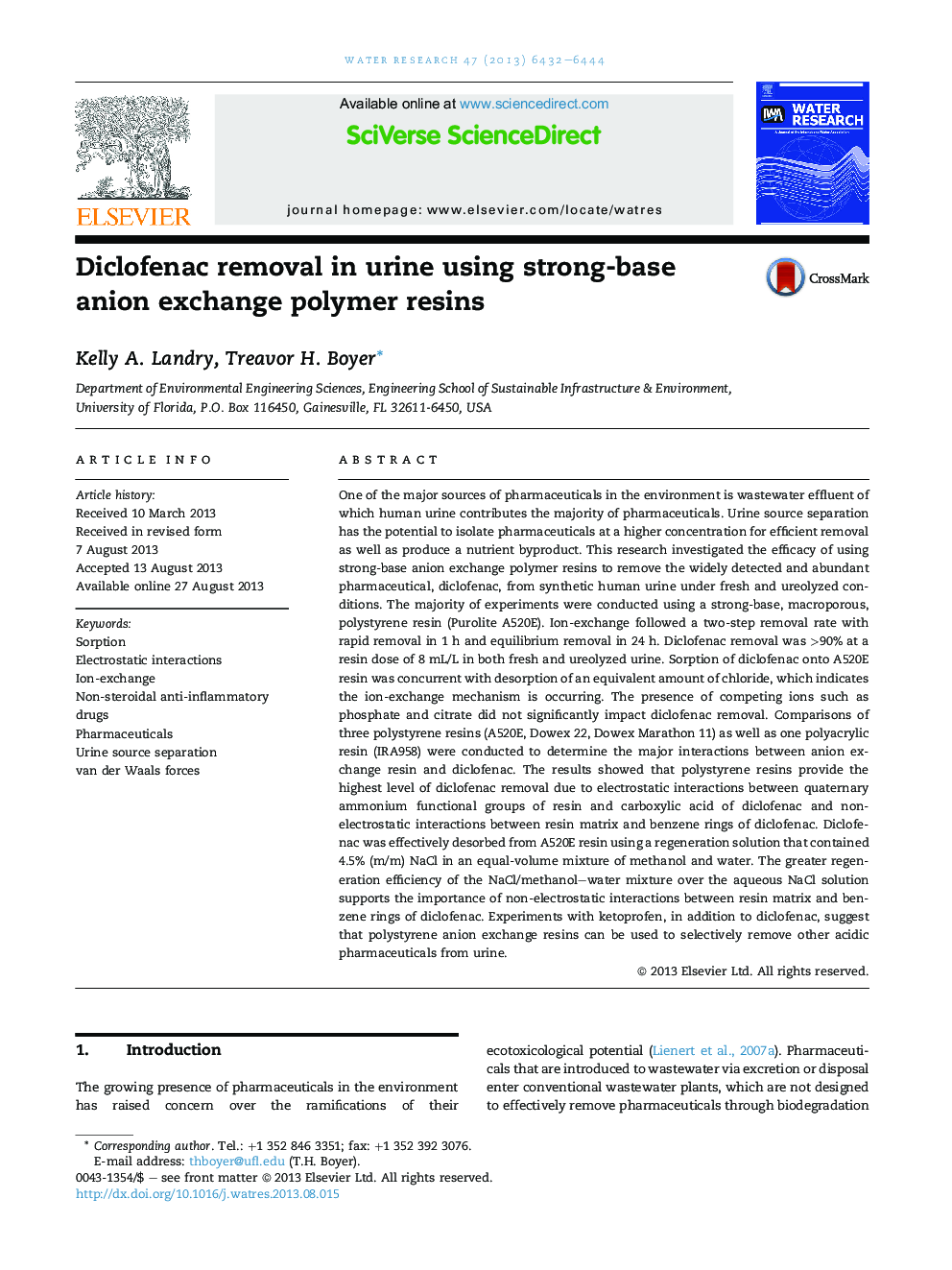| کد مقاله | کد نشریه | سال انتشار | مقاله انگلیسی | نسخه تمام متن |
|---|---|---|---|---|
| 4481895 | 1316840 | 2013 | 13 صفحه PDF | دانلود رایگان |

• Diclofenac removal (>90%) in human urine by anion exchange resin.
• Diclofenac ion-exchange similar in fresh urine (pH 6) and ureolyzed urine (pH 9).
• High chloride and sulfate in urine impeded diclofenac ion-exchange.
• Phosphate and natural metabolite citrate did not affect diclofenac ion-exchange.
• Electrostatic/non-electrostatic forces between polystyrene resin and diclofenac.
One of the major sources of pharmaceuticals in the environment is wastewater effluent of which human urine contributes the majority of pharmaceuticals. Urine source separation has the potential to isolate pharmaceuticals at a higher concentration for efficient removal as well as produce a nutrient byproduct. This research investigated the efficacy of using strong-base anion exchange polymer resins to remove the widely detected and abundant pharmaceutical, diclofenac, from synthetic human urine under fresh and ureolyzed conditions. The majority of experiments were conducted using a strong-base, macroporous, polystyrene resin (Purolite A520E). Ion-exchange followed a two-step removal rate with rapid removal in 1 h and equilibrium removal in 24 h. Diclofenac removal was >90% at a resin dose of 8 mL/L in both fresh and ureolyzed urine. Sorption of diclofenac onto A520E resin was concurrent with desorption of an equivalent amount of chloride, which indicates the ion-exchange mechanism is occurring. The presence of competing ions such as phosphate and citrate did not significantly impact diclofenac removal. Comparisons of three polystyrene resins (A520E, Dowex 22, Dowex Marathon 11) as well as one polyacrylic resin (IRA958) were conducted to determine the major interactions between anion exchange resin and diclofenac. The results showed that polystyrene resins provide the highest level of diclofenac removal due to electrostatic interactions between quaternary ammonium functional groups of resin and carboxylic acid of diclofenac and non-electrostatic interactions between resin matrix and benzene rings of diclofenac. Diclofenac was effectively desorbed from A520E resin using a regeneration solution that contained 4.5% (m/m) NaCl in an equal-volume mixture of methanol and water. The greater regeneration efficiency of the NaCl/methanol–water mixture over the aqueous NaCl solution supports the importance of non-electrostatic interactions between resin matrix and benzene rings of diclofenac. Experiments with ketoprofen, in addition to diclofenac, suggest that polystyrene anion exchange resins can be used to selectively remove other acidic pharmaceuticals from urine.
Figure optionsDownload high-quality image (124 K)Download as PowerPoint slide
Journal: Water Research - Volume 47, Issue 17, 1 November 2013, Pages 6432–6444